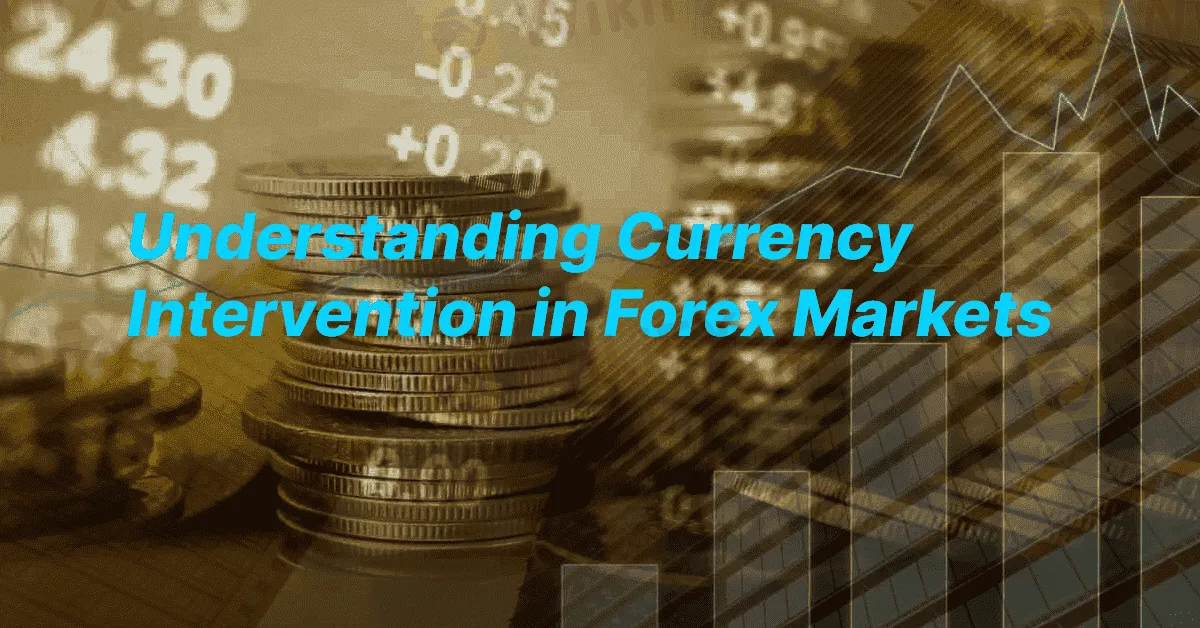Understanding Currency Intervention in Forex Markets
Abstract:Currency intervention involves actions by a nation's central bank or monetary authority to influence the value of its currency in the foreign exchange (forex) market. These interventions aim to achieve specific economic objectives, such as controlling inflation, stabilizing the currency, or influencing trade balances.

Currency intervention involves actions by a nation's central bank or monetary authority to influence the value of its currency in the foreign exchange (forex) market. These interventions aim to achieve specific economic objectives, such as controlling inflation, stabilizing the currency, or influencing trade balances.
Types of Currency Intervention
- Direct Intervention: This involves the central bank buying or selling its own currency against foreign currencies. For example, to weaken its currency, a central bank might sell its own currency and purchase foreign currencies. Conversely, to strengthen its currency, it might buy its own currency using foreign reserves.
- Indirect Intervention: Instead of directly engaging in currency markets, a central bank may adjust interest rates or implement monetary policies that influence currency values. For instance, raising interest rates can attract foreign capital, leading to an appreciation of the domestic currency.
Purposes of Currency Intervention
- Stabilizing the Currency: Excessive volatility can harm economic stability. Interventions can smooth out fluctuations, providing a more predictable environment for businesses and investors.
- Controlling Inflation: A stronger currency can reduce the cost of imports, helping to keep inflation in check.
- Influencing Trade Balances: By adjusting the currency's value, a country can make its exports more competitive or imports more expensive, thereby affecting the trade balance.
Effectiveness and Considerations
The success of currency interventions depends on various factors, including the scale of the intervention, market perceptions, and the underlying economic conditions. While interventions can have short-term effects, their long-term success often requires consistent and credible policies. Additionally, interventions can lead to retaliatory actions from other countries, potentially escalating into currency wars.
Recent Examples
- Swiss Franc: During the 2007-2008 financial crisis, the Swiss National Bank (SNB) intervened to prevent the Swiss franc from appreciating too much, which could harm the country's export-driven economy. The SNB's actions included purchasing foreign currencies to weaken the franc.
- Russian Ruble: In 2014, the Central Bank of Russia allowed the ruble to float freely, significantly depreciating. The central bank then intervened by raising interest rates and selling foreign reserves to stabilize the currency.
Conclusion
Currency intervention is a critical tool for central banks to manage their economies. While it can effectively achieve short-term objectives, the long-term success of such interventions depends on sound economic fundamentals and consistent policy implementation. Understanding the mechanisms and implications of currency intervention is essential for policymakers, investors, and businesses engaged in the global economy.

Read more

Pi Network: Scam Allegations Spark Heated Debate
A whistleblower report has surfaced, casting doubt on the legitimacy of Pi Network, alleging psychological manipulation, opaque operations, and potential financial exploitation. What is your take on this?

The Crypto Shift: Challenges and Opportunities for Traditional Brokers
Crypto exchanges are expanding into traditional asset classes like forex and commodities, blurring the lines with traditional brokers. Meanwhile, few brokers, like eToro, have successfully integrated crypto into their platforms, revealing both the opportunities and the challenges ahead.

The 2025 Trade War: Why This Round Is Unlike Any Before
The 2025 iteration of the U.S.-China trade conflict has taken on a scale and complexity far surpassing previous episodes, marking a significant escalation under former President Donald Trump’s return to the White House.

When Tariffs Trigger Turmoil: 10 Past Trade Wars That Rearranged the World
Far from being mere policy tools, tariffs and trade restrictions have repeatedly served as catalysts for economic upheaval, diplomatic rifts, and even armed conflict. Here are ten historically significant trade wars that altered the course of nations and the global economy.
WikiFX Broker
Latest News
Love, Investment & Lies: Online Date Turned into a RM103,000 Scam
Broker Took 10% of User's Profits – New Way to Swindle You? Beware!
Pi Network: Scam Allegations Spark Heated Debate
Broker Comparsion: FXTM vs AvaTrade
Account Deleted, Funds Gone: A New Broker Tactic to Beware Of?
Broker’s Promise Turns to Loss – Funds Disappear, No Compensation!
StoneX Subsidiary, Gain Global Markets Bermuda, Penalized for Trading Misconduct
El Salvador and U.S. Launch Cross-Border Crypto Regulatory Sandbox
The Instagram Promise That Stole RM33,000
Coinbase Launches Bitcoin Yield Fund for Institutional Investors
Rate Calc
